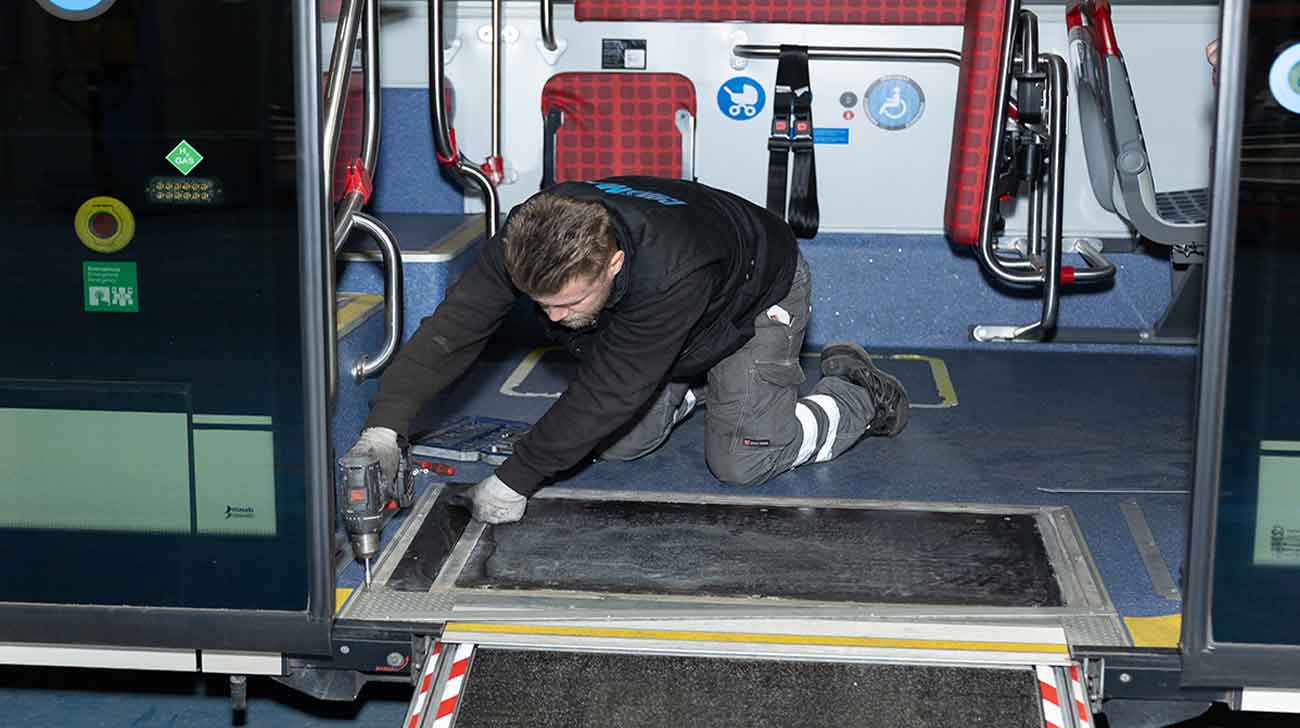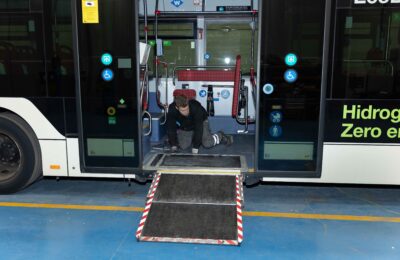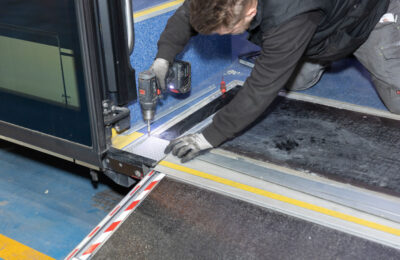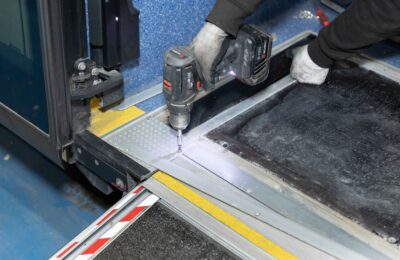
17 Feb Types of Urban Vehicle Access Ramps: Importance and Factors to Consider
Types of Urban Vehicle Access Ramps: Importance and Factors to Consider
Accessibility is a key factor in the design of urban vehicles, as it enables all people, including those with reduced mobility, to use public transport safely and efficiently. Access ramps play a key role in this respect, as they facilitate the entry and exit of passengers in wheelchairs, the elderly or those with reduced mobility.
In this article, we will explore the different types of access ramps for urban vehicles, their importance and the key factors to consider when installing them.
The importance of access ramps in urban vehicles
Ensuring accessible transport is an essential requirement in any modern city. The installation of ramps on buses, minibuses and other urban transport vehicles not only complies with current accessibility regulations, but also offers key benefits such as:
- Inclusion and equity: Allows all people to use public transport without limitations.
- Greater autonomy for passengers: Facilitates the mobility of people with disabilities without the need for external assistance.
- Safety and comfort: Reduces the risk of accidents when boarding or exiting the vehicle.
- Regulatory compliance: Complies with regulations established to ensure universal accessibility in public transport.

Types of urban vehicle access ramps
There are different types of ramps designed to suit the specific needs of each vehicle and its passengers.
Manual Ramps
They are the simplest and most economical. Manual ramps are designed to be deployed manually by the driver or by an attendant and require manual intervention for use. They are characterised by easy installation and maintenance and are less prone to mechanical failure. Suitable for vehicles with less space or less frequent routes such as minibuses or adapted transport vehicles with a moderate number of passengers with reduced mobility.
Electric or Automatic Ramps
This type of ramp is operated either electrically or hydraulically, making it easy to deploy without manual effort. Their main advantages include greater convenience and speed of operation, as they are activated automatically at the push of a button. They are also safer for passengers with reduced mobility. Electric ramps are ideal for high-frequency city buses, where speed and efficiency in accessibility are essential.
Mixed ramps (manual-electric)
They combine the advantages of manual and electric ramps, allowing their use in automatic mode but with the option of manual deployment in case of failure of the electrical system. Their characteristics are their greater versatility and safety in the event of mechanical failure. This type of ramp is common in urban buses and intercity coaches, where it is essential to guarantee accessibility in all circumstances.

Key factors in the installation of access ramps
The installation of an access ramp on an urban vehicle should be carried out with several key factors in mind.
Vehicle type and design
Not all ramps are suitable for all vehicles. It is necessary to consider the available interior space, floor height and seating arrangement to choose the best option.
Available Space
Some ramps require more space for installation and deployment. It is important to assess whether the vehicle has the necessary space to incorporate a ramp without affecting internal mobility and passenger comfort.
User Needs
The type of ramp should be chosen according to the frequency and type of passengers that will use it. For routes with a high volume of passengers with reduced mobility, an electric or mixed ramp may be the best option.
Current regulations
Each country or region has specific regulations on accessibility in public transport. In Europe, for example, the UNECE R107 standard sets out the requirements that buses must meet to ensure accessibility.

Correct installation and maintenance are key
Access ramps in urban vehicles are an essential element to ensure universal accessibility. The choice between manual, electric or mixed ramps will depend on the characteristics of the vehicle, the needs of the passengers and the applicable regulations.
At Consman, we are committed to improving urban mobility, offering solutions for the installation, maintenance and repair of access ramps so that urban vehicles meet the highest standards of accessibility and safety.


No Comments